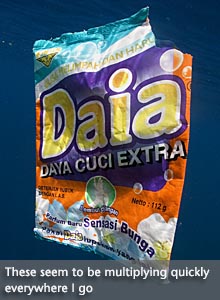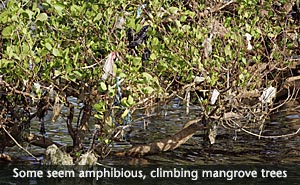Perspective is an editorial column I write regularly for FiNS Magazine. This installment is entitled "New Species":
I spend a lot of time looking for new and interesting things to learn about and photograph.
It’s a difficult and often frustrating process — plodding back to the same site day after day waiting for a stubborn fish to come out of its hole; or baking under intense UV rays for weeks on end, desperately hoping for a friendly humpback whale to look my way and smile.
Every once in a while though, chance and circumstance converge, and I get lucky. I find something new and unusual. Those are the rare days when I rejoice and feel really good about my efforts, as I did on a recent trip to a popular dive destination in Asia.
When I first started diving, I was overwhelmed by the incredible variety of life, most of which seemed almost alien — lionfish, with their incredibly ornate but toxic fins; nudibranchs, which look like little reef decorations but are truly voracious carnivores; moray eels, which look more like slithering submersible snakes than the fish they really are.

Over the years, I’ve learned my way around the reef; my initial sense of wonder has matured into a comfortable sense of familiarity, and it’s not often that I see something new. On this particular trip though, I immediately came across something in the water I didn’t recall seeing before. Naturally, I was intrigued.
Observing my quarry from a distance, I noticed some movement, mostly in tandem with the current. From time to time, there was a flip of an appendage or a subtle shift in orientation. Fortunately, my subject hadn’t noticed me, so I readied my camera, approached and took a few pictures. Then more of the new creatures converged out of the blue, and my sense of excitement heightened. There appeared to be many individuals, some large, some small. Some specimens appeared to prefer the company of others, while others looked more comfortable on their own. Colouring was magnificent — red, green, orange, yellow, blue — a photographer’s and naturalist’s dream.
Curiosity took over. Dozens of questions flooded into my head: Where did they come from? What are their feeding habits? How do they reproduce? Which are male? Female? Do they migrate, or were they unique to the location?

A few more hesitant fin kicks, a few more shots, then my air supply began to run low. Realising that my remaining time with this amazing discovery was limited, I took a few more pictures and started my gradual ascent to the surface, where I contemplated my experience and wondered when my next encounter would be.
So here, published for the first time are pictures of what I found. Unlike many of today’s endangered species, these creatures are growing in number. I haven’t worked out why they seem to be multiplying so rapidly, and haven’t yet been able to identify precisely what they are, but I’m sure we’ll be seeing a lot more of them in the oceans we dive.
[tags]trash, pollution, marine conservation[/tags]